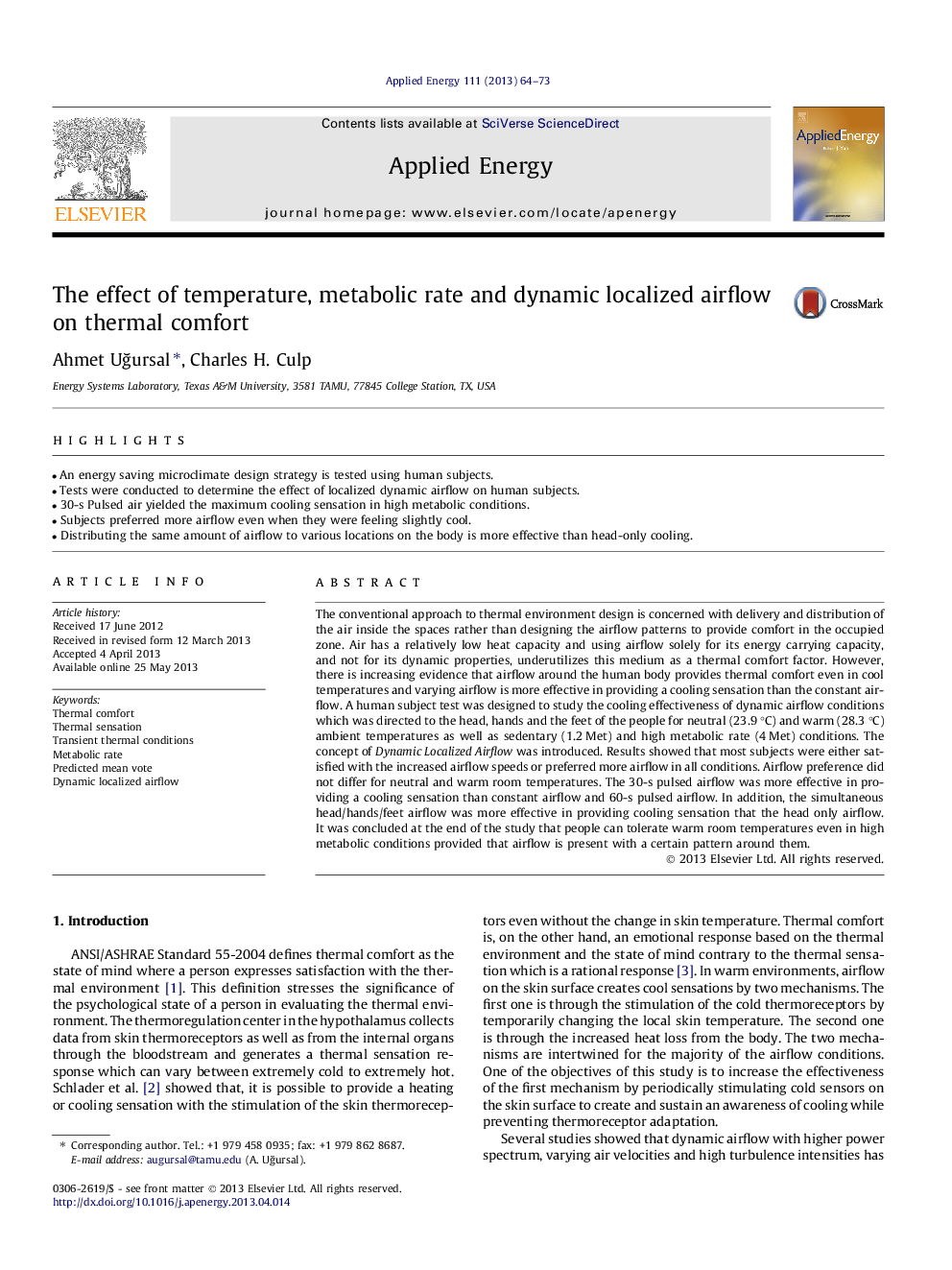| Article ID | Journal | Published Year | Pages | File Type |
|---|---|---|---|---|
| 6692168 | Applied Energy | 2013 | 10 Pages |
Abstract
The conventional approach to thermal environment design is concerned with delivery and distribution of the air inside the spaces rather than designing the airflow patterns to provide comfort in the occupied zone. Air has a relatively low heat capacity and using airflow solely for its energy carrying capacity, and not for its dynamic properties, underutilizes this medium as a thermal comfort factor. However, there is increasing evidence that airflow around the human body provides thermal comfort even in cool temperatures and varying airflow is more effective in providing a cooling sensation than the constant airflow. A human subject test was designed to study the cooling effectiveness of dynamic airflow conditions which was directed to the head, hands and the feet of the people for neutral (23.9 °C) and warm (28.3 °C) ambient temperatures as well as sedentary (1.2 Met) and high metabolic rate (4 Met) conditions. The concept of Dynamic Localized Airflow was introduced. Results showed that most subjects were either satisfied with the increased airflow speeds or preferred more airflow in all conditions. Airflow preference did not differ for neutral and warm room temperatures. The 30-s pulsed airflow was more effective in providing a cooling sensation than constant airflow and 60-s pulsed airflow. In addition, the simultaneous head/hands/feet airflow was more effective in providing cooling sensation that the head only airflow. It was concluded at the end of the study that people can tolerate warm room temperatures even in high metabolic conditions provided that airflow is present with a certain pattern around them.
Related Topics
Physical Sciences and Engineering
Energy
Energy Engineering and Power Technology
Authors
Ahmet UÄursal, Charles H. Culp,
